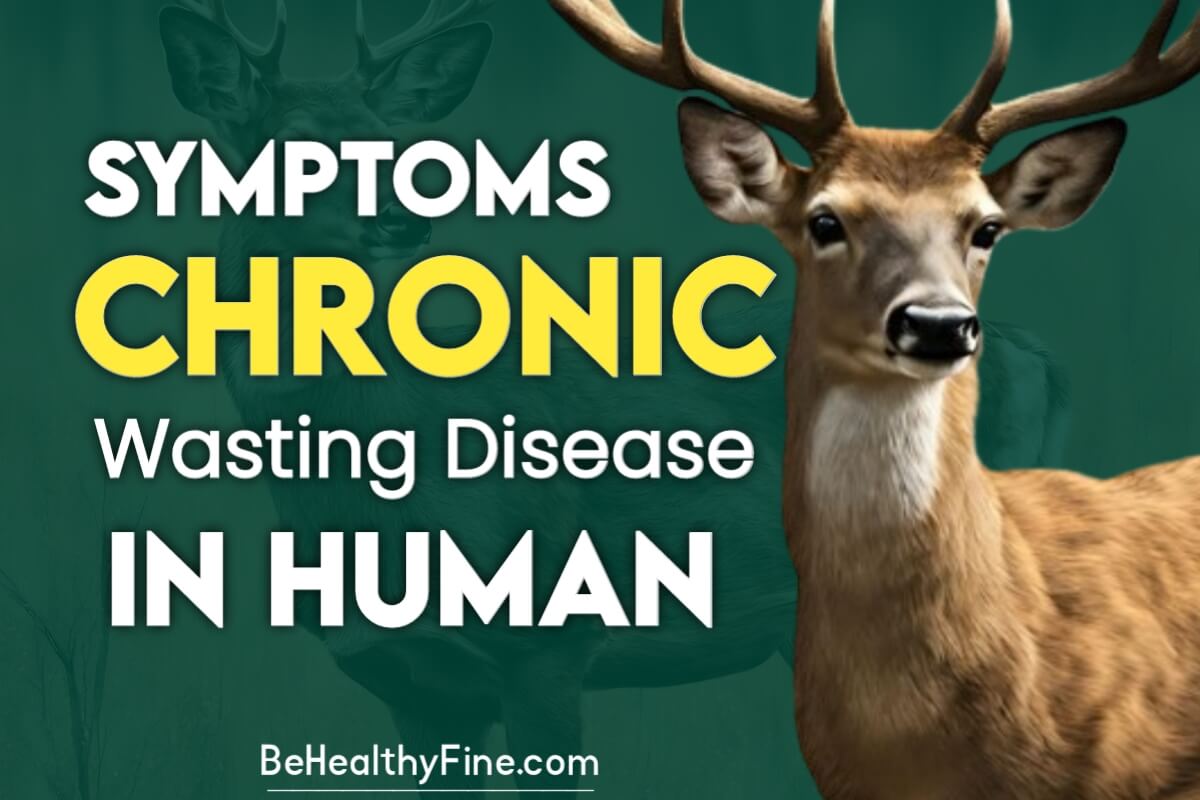Understanding Chronic Wasting Disease in Humans
While evidence of CWD transmission to humans is scarce, exploring this potential link remains critical for public health concerns.
Scientists are studying whether CWD, primarily found in certain animals like deer and elk, can affect people. Currently, there isn’t clear evidence that CWD can pass from animals to humans, But, it’s really important to keep checking if this could happen because it’s a big worry for Human health.
Even though it’s not clear right now, researchers are still looking into how this disease might affect people. Making sure it doesn’t harm humans is a big concern, so scientists are working hard to understand more about this possible connection.
Symptoms and Effects of Chronic Wasting Disease
The disease manifests in behavioral changes, weight loss, and physical deterioration in affected animals. It’s imperative to recognize these symptoms for early intervention.
Chronic Wasting Disease (CWD) brings about noticeable changes in how animals behave, how much they weigh, and how their bodies work. Affected animals might act strangely, like isolating themselves from their groups or walking in circles.
They could also lose weight and look skinny despite eating normally. Their bodies slowly weaken, making them look sick. It’s really important to spot these signs early because it helps in trying to help the animals before they get worse. Early recognition can make a big difference in treating the disease.
Causes of Chronic Wasting Disease in Human
Chronic Wasting Disease (CWD) happens because of something called prions. These prions are strange proteins that make other normal proteins in the brain fold in the wrong way.
This folding problem causes issues in the brain and leads to neurological problems. It’s really important to understand how this all happens because it helps us figure out how to deal with the disease better. Knowing about these mechanisms is a big deal in finding ways to fight against CWD.
Impact on Wildlife and Ecosystem
Chronic Wasting Disease (CWD) is a big problem for animals living in the wild. It can cause serious issues for their numbers and how they live. When CWD spreads among wildlife, it messes up how nature works, like how animals interact and the variety of life in an area.
Understanding how CWD affects the environment helps us see how it can change things in nature. It’s important to know these effects because they’re not just about animals getting sick. it’s about how it affects the whole natural world around us.

Learn More
Diagnosis and Testing for CWD
Getting the right test to find Chronic Wasting Disease (CWD) in animals is really important. It helps us keep track of the disease and stop it from spreading.
Scientists are always working on better ways to test for Chronic Wasting Disease (CWD). Having good methods to test for this disease is super important to fight against it. These tests help us know where CWD is and how to stop it from getting worse.
Preventive Measures against Chronic Wasting Disease in Humans
To stop Chronic Wasting Disease (CWD) from spreading to people, it’s vital to take steps to prevent it. One important way is to limit how much animals move around, so the disease doesn’t spread easily. Also, reducing how much humans help in spreading the disease is crucial.
If we can control how animals move and limit how much humans help in spreading Chronic Wasting Disease (CWD), it will really help in stopping the disease from spreading more. These steps are super important in keeping people safe from CWD.
Management and Control Strategies for Chronic Wasting Disease in Humans
To manage and control Chronic Wasting Disease (CWD) in people, it’s important to have good plans. One way is to control how many people are affected by the disease.
This might include reducing the number of affected individuals or keeping them away from healthy ones. Another way is by using containment measures, which means keeping the disease in one place and not letting it spread.
These strategies help in stopping the disease from getting worse and affecting more people. Having these plans is really important to manage CWD and keep people safe.
Conclusion
Chronic Wasting Disease Symptoms in humans is a big danger to animals in the wild and might even affect humans. It’s really important to know why it happens, how it affects animals and people, and how we can stop it from spreading.
Understanding this disease well helps us fight against it in a better way. By knowing how it spreads and its effects on both animals and humans, we can work together to protect against this serious illness.







